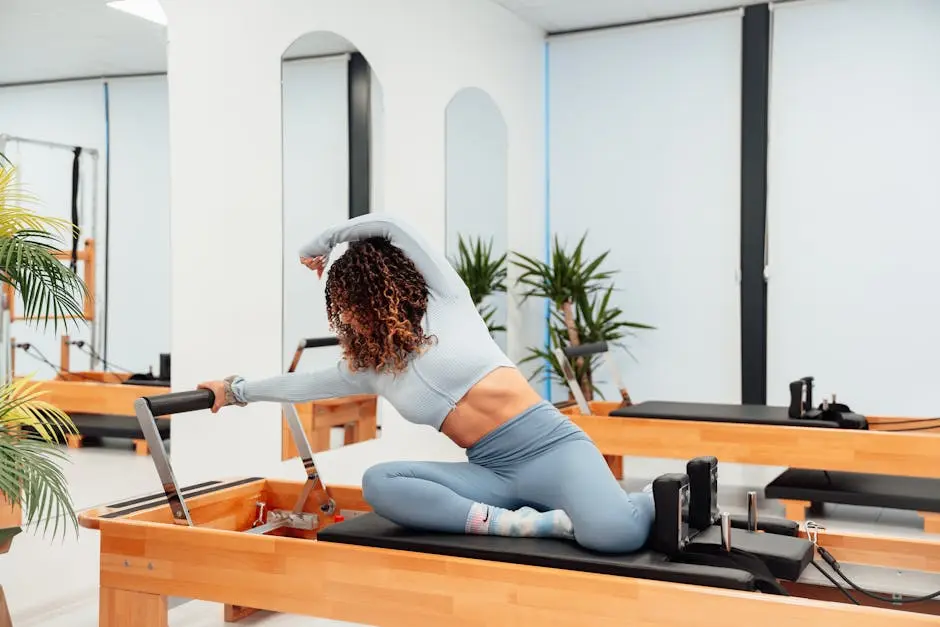How Does Pilates Differ from Other Fitness Options in Austin?
In the bustling fitness scene of Austin, it's essential to understand the unique benefits of different workout methods. Pilates has gained immense popularity among fitness enthusiasts, but how does it truly compare to other options available? In this guide, we'll break down the key differences between Pilates and more traditional fitness workouts to help you make informed decisions about your fitness journey.
Understanding Pilates
>Learn what Pilates is all about, its roots, and how it focuses on core strength, flexibility, and balance.
Originating from the early 20th century, Pilates was developed by Joseph Pilates as a way to enhance physical health and well-being. This method emphasizes the connection between the body and mind, encouraging practitioners to engage in mindful movements. By focusing on controlled, precise exercises, individuals not only strengthen their core but also develop greater awareness of their body mechanics.
One of the distinguishing features of Pilates is its emphasis on controlled breathing. This aspect is often overlooked in traditional workouts but plays a critical role in how Pilates practitioners maximize their movements. Not only does focused breathing improve performance, but it also helps reduce stress and increase relaxation—a vital aspect in today's fast-paced world.
Comparison with Traditional Workouts
>Discover how Pilates differs from traditional gym workouts and resistance training in terms of approach and philosophy.
When you step into a gym, the ambiance is often charged with energy, with weights clanging and people pushing their limits. In contrast, a Pilates class offers a serene environment that prioritizes quality over quantity. While traditional workouts may focus on lifting heavy weights and building muscle mass, Pilates encourages a more holistic approach to fitness, concentrating on building long, lean muscles and enhancing flexibility.
Moreover, traditional workouts can sometimes lead to injuries if not performed with proper form. Pilates mitigates that risk by emphasizing proper alignment and controlled movements. This focus not only helps in injury prevention but also promotes better posture over time, offering a distinct advantage for those who spend long hours sitting at desks.
Benefits of Pilates
Explore the specific benefits of practicing Pilates, including improved posture, injury prevention, and increased body awareness.
The benefits of Pilates extend far beyond just physical improvements. For instance, many practitioners report enhanced body awareness, which translates to better control over their movements in daily life. This increased awareness fosters a sense of confidence as individuals become more attuned to their bodies and any imbalances they may be experiencing.
In addition to these mental benefits, practicing Pilates can lead to significant physical changes. Improved posture is commonly noted, as the exercises are designed to strengthen the muscles that support the spine. This can alleviate chronic back pain and reduce the risk of future injuries—a crucial consideration for many people.
Furthermore, Pilates offers a low-impact workout option that is suitable for all fitness levels. Whether you’re a beginner or an advanced athlete, you can tailor the exercises to fit your needs. This adaptability makes Pilates an inclusive choice within Austin's diverse fitness landscape.
Pilates vs. Other Fitness Classes
>Find out how Pilates stacks up against other popular fitness classes like yoga, spinning, and HIIT.
While Pilates and yoga share similarities, such as their focus on breath and movement, they differ significantly in structure and intention. Pilates is generally more dynamic, incorporating specific sequences aimed at strengthening and conditioning the body. This differs from the more restorative approach of yoga, intended primarily for relaxation and flexibility.
When pitted against high-intensity interval training (HIIT), Pilates offers a contrasting experience. HIIT is all about quick bursts of energy and maximum calorie burn. Conversely, Pilates focuses on the quality of movement rather than sheer intensity. This makes it a great complement to high-energy workouts, providing the balance needed to avoid burnout while enhancing overall body function.
Choosing the Right Class
Get tips on how to choose the best Pilates class for your fitness level and goals in Austin's vibrant fitness community.
Choosing the right Pilates class can seem daunting given the variety of options available in Austin. To start, consider your fitness level and any injuries you may need to accommodate. Many studios offer introductory classes that can help you ease into the practice. Don't hesitate to ask instructors for their recommendations—they're usually more than happy to guide you based on your unique needs.
Another important factor is the class size. Smaller classes allow for more personalized attention, which can significantly enhance your learning experience. Look for studios that emphasize community, as this can make your practice feel more inviting and enjoyable. Joining a supportive group can be a game-changer in your fitness journey, especially as you navigate the distinct benefits that Pilates has to offer in Austin.
Wrapping Up: Your Fitness Journey
Ultimately, Pilates offers distinct benefits that set it apart from other fitness options in Austin. Whether you're seeking improved flexibility, core strength, or a mind-body connection, Pilates may be the perfect fit for you. Explore local studios and find a class that matches your goals for a healthier lifestyle.

